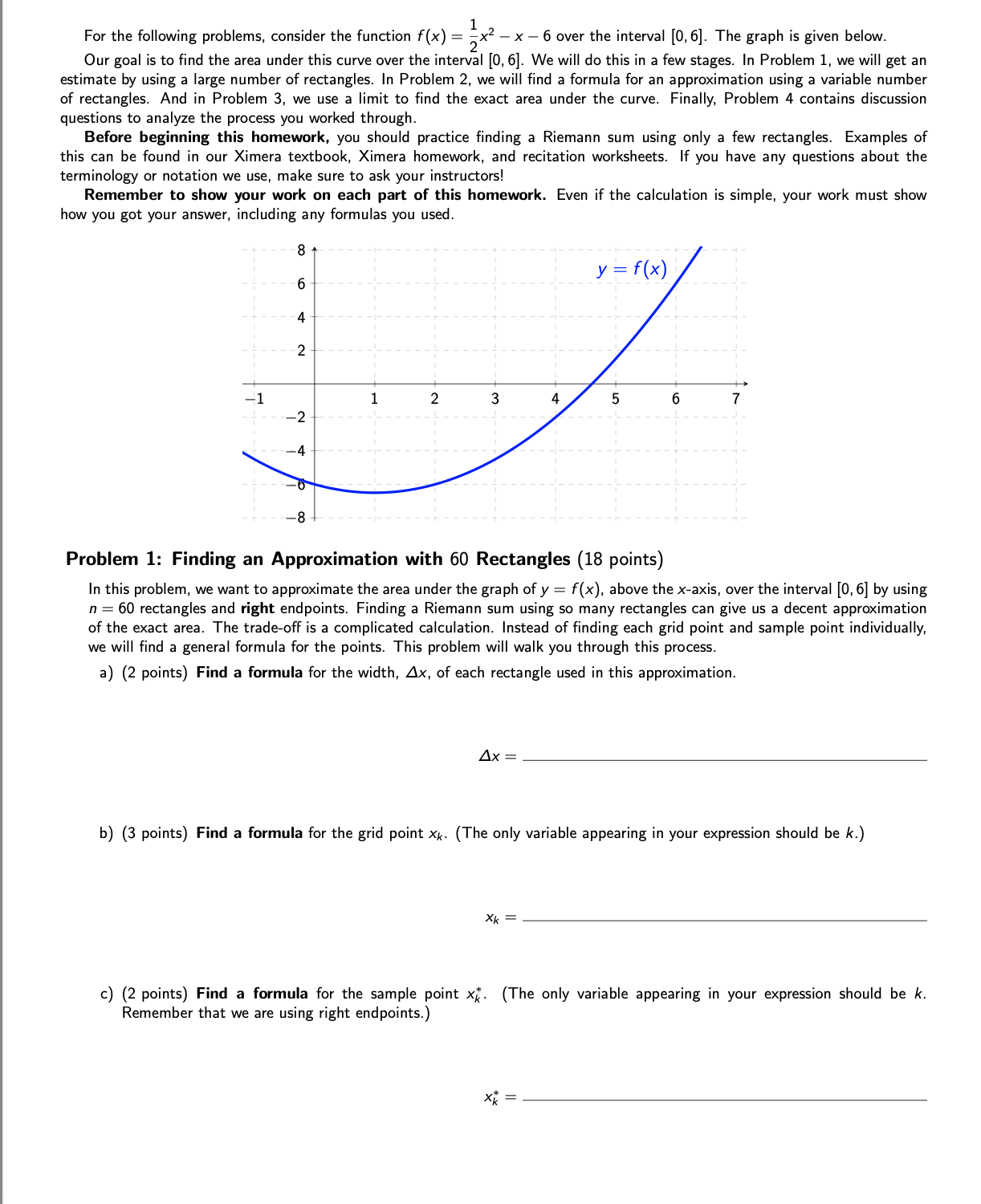Answered step by step
Verified Expert Solution
Question
1 Approved Answer
For the following problems, consider the function f ( x ) = 1 2 x 2 - x - 6 over the interval 0 ,
For the following problems, consider the function over the interval The graph is given below.
Our goal is to find the area under this curve over the interval We will do this in a few stages. In Problem we will get an
estimate by using a large number of rectangles. In Problem we will find a formula for an approximation using a variable number
of rectangles. And in Problem we use a limit to find the exact area under the curve. Finally, Problem contains discussion
questions to analyze the process you worked through.
Before beginning this homework, you should practice finding a Riemann sum using only a few rectangles. Examples of
this can be found in our Ximera textbook, Ximera homework, and recitation worksheets. If you have any questions about the
terminology or notation we use, make sure to ask your instructors!
Remember to show your work on each part of this homework. Even if the calculation is simple, your work must show
how you got your answer, including any formulas you used.
Problem : Finding an Approximation with Rectangles points
In this problem, we want to approximate the area under the graph of above the axis, over the interval by using
rectangles and right endpoints. Finding a Riemann sum using so many rectangles can give us a decent approximation
of the exact area. The tradeoff is a complicated calculation. Instead of finding each grid point and sample point individually,
we will find a general formula for the points. This problem will walk you through this process.
a points Find a formula for the width, of each rectangle used in this approximation.
b points Find a formula for the grid point The only variable appearing in your expression should be
c points Find a formula for the sample point The only variable appearing in your expression should be
Remember that we are using right endpoints.
d points Find a formula for the height of the th rectangle, The only variable appearing in your expression
should be
e points Write the Riemann sum for this area approximation in Sigma notation. Do not evaluate the sum here. The
only variable appearing in your expression should be the index variable
Sum in Sigma Notation:
f points Evaluate the sum from part e above. Your answer should have no variables remaining. Use the summation
formulas from this section in the textbook where appropriate.

Step by Step Solution
There are 3 Steps involved in it
Step: 1

Get Instant Access to Expert-Tailored Solutions
See step-by-step solutions with expert insights and AI powered tools for academic success
Step: 2

Step: 3

Ace Your Homework with AI
Get the answers you need in no time with our AI-driven, step-by-step assistance
Get Started


